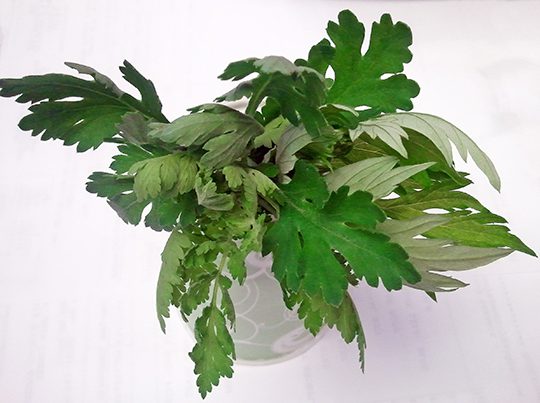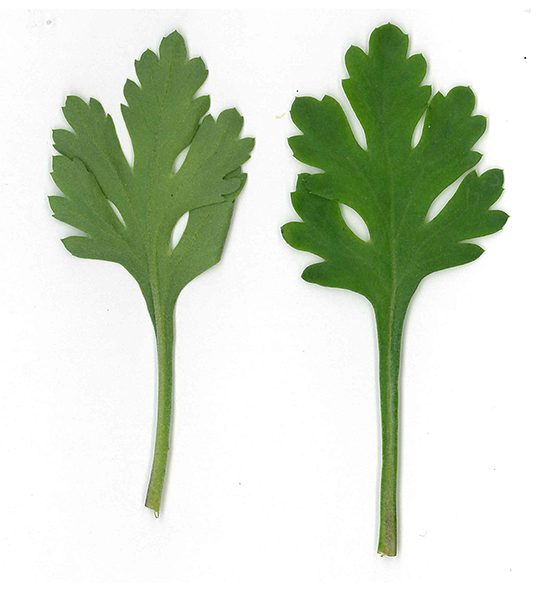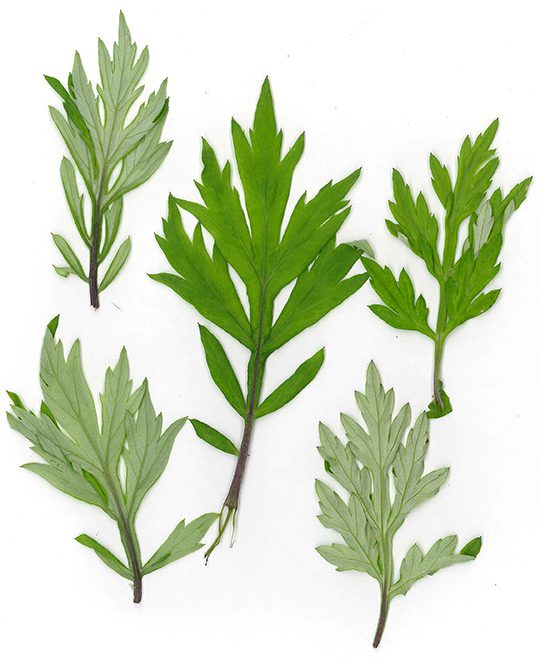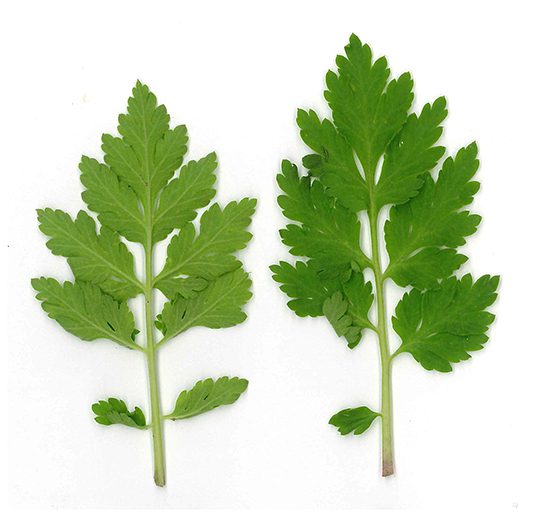Mugwort: the weed that looks like chrysanthemum
Mugwort: the weed that looks like chrysanthemum
“It this a perennial or is it a weed?”
Customers frequently come into our store in Hyannis with bunches of foliage and ask that question. Early in the season it’s sometimes hard to tell which plants are desirable perennials and which ones are unwanted weeds. One of the plants that frequently fools gardeners is mugwort (Artemisia vulgaris), a persistent and invasive weed with foliage that looks like mums. If you have mugwort, you’ll want to dig it out as quickly as possible and continue the prompt removal of returning shoots. Here is a pictorial to help you know if mugwort has invaded your garden.




Posted in Perennials, Problem Solving
15 Comments
Leave a Comment
Subscribe To Our Newsletter
Sign up for our weekly email about sales and events.

Thanks for all your helpful suggestions. I have been gardening for years and never heard about Green Cure or the other product that helps stop the mildew that attacks my squash and cucumber plants each year in August. I love reading your many ideas/suggestions. I feel like Peggy Eastman is back in town.
Thanks, Irene! The key with Green Cure (or any fungicide for that matter) is that it works best if you start applying it BEFORE the plant has a problem. So start using it early and spray every week to every other week depending on the weather. BTW: mildew is always worse in dry weather because a good hard rain washes the spores off of plants. So pay particular attention if the weather is humid but we haven’t had any rain. Happy Gardening!
How neat to come across your website. I grew up on the Cape, Bass River. I just started a small weeding business (“I Love to Weed”). Trying to learn weeds from plants by leaves, before blossoming. Some of my clients, however, call weeds ‘wild flowers’. So your pictures with detail is very helpful to me.
Thanks for sharing.
Susan,
I LOVE that you’re starting a weeding business! I love to weed too…very meditative. We’re pleased that you found this helpful, and hope that if you’re back on the Cape at any point you’ll stop into the store and say hello!
does mugwort flower? when ?
Mugwort does flower but it’s not a showy flower – it’s pale green and tiny, so many people dont’ even know the plant is blooming. They grow 2-4 feet tall, and kind of ragged looking, when flowering.
I was diagnosed with being highly allergic to mug wort weed, but have no idea where I would have come in contact with it as we to our knowledge do not grow it? Any information on your end would be appreciated
Jacqueline,
You don’t mention where you live, but in many parts of the US and Canada mugwort flourishes. It’s not always noticeable on the side of the road, at the back of the garage, or along property lines. When it’s in bloom the plant is quite tall and skinny. The flowers aren’t very noticeable. If you’re very allergic you’ll want to learn how this plant looks in all stages of growth, and always be sure to wear gloves when working in the garden or yard in case you don’t notice it at first. I’d suggest that you enter the name into “Google Image” so that you will see photos of various growth habits.
I live in northern Ontario Canada is it possible that I would have this weed mug work growing in my yard I recently had allergy testing and discovered that I have a an allergy to this . Does any body know?
Brenda,
Yes, it’s possible that mugwort is growing in Northern Ontario. You could contact your local garden center about it.
This was very helpful. I had googled mugwort images and was getting very confused. There are so many other plants mixed in with the images. This is so far the best explanation of how to identify the plant that I’ve come across.
Thank you thank you! This has been puzzling me and my neighbor for two years! I pulled it all out in late summer last year, but from its rejuvenation and spread this year, I didn’t pull it out at all. It’s one of those plants that easily releases most of its roots when pulled out by hand, but leaves most still in place! Sure looked like the root came out with it, but weeds are so clever that way! So I’m planning to dig the whole area up this year and dispose of the soil. Hopefully that will get rid of most of it.
Keep watching the area. This is a persistent plant, but if you check that area every week and pull up any small shoots that appear, you will eventually win.
I planted mums in GA and made sure is covered them from frost. They all came back very large but my Picture this” app says they are mugworts!! They are starting to bloom. Are they bad to have?
If they are quite tall, they are probably mugwort and yes, you probably don’t want to leave them as they are very hard to get rid of once they are established. But before you rip them out, you might put “mugwort” into Google Image and compare your plants to what you see, since apps can be wrong. Good luck!